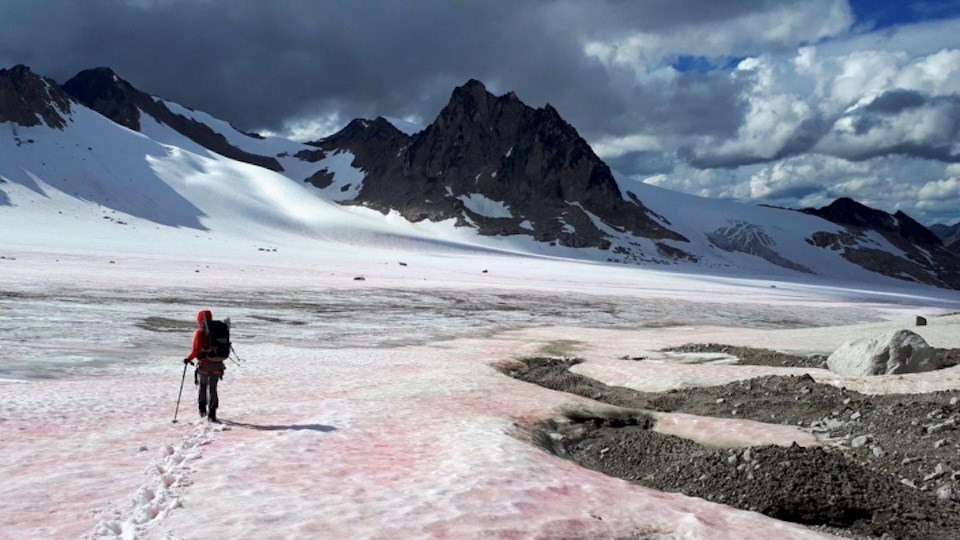It can be shocking to see a patch of blood-red snow, but don’t be alarmed. It most likely isn’t a crime scene but rather an algae site that can offer deeper insight into the effects of climate change.
Watermelon snow, also known as glacial blood, is a red-pigmented bloom of micro algae and associated organisms. Lynne Quarmby, a professor of molecular biology and biochemistry at Simon Fraser University, spent the past four years studying the phenomenon that occurs all over the world.
“If you come across them when you're hiking in the mountains, it really does look like the colour of watermelon when you have a really intense bloom,” she said.
She recently published her study, “Satellite mapping of red snow on North American glaciers,” in the Nov. 24 edition of Science Advances.
While the phenomenon occurs during the summer months, it is a direct result of conditions that occur during the winter months and is entirely dependent on snowfall.
If the snow is too dark, then it will melt faster, posing another threat to glaciers. In the early summer and late spring when the snow starts to melt, the algae grow in the melted water.
“But if it melts out too fast, they don't grow. They don't bloom. They don't grow enough for us to be able to see them, and they only grow in the cold, so if it gets too warm, they die.”
Just as with the related algae blooms that occur in lakes, climate change is causing a shift in the occurrence of watermelon snow.
In summer 2020, the heat dome in southwestern British Columbia resulted in a complete failure of watermelon snow’s algae to form.
“There were none because the snow melted out too fast for them to grow,” Quarmby said.
Her study is really the first foray to set the baseline of knowledge into the otherwise mysterious phenomenon.
“We'll have to see how much we learn while we still have them. The bigger picture in terms of melting of the glaciers and the snowpack in the mountains, the algae definitely will accelerate that melt. Now, normally say 200 years ago, the glaciers would be melting and growing, and they would be in some kind of balance because we were in a heat balance on earth,” she said.
“Now that Earth is out of balance, and there's a net warming, there's actually a net and relatively rapid loss of glaciers. The fact that the algae are accelerating that is an issue for all of the ecosystems, including human society that depend on the snowpack in the glaciers. If those melt out to fast, then that will impact water supplies through reservoirs and through rivers, or agriculture and human use.”
While the study is now completed, there is still the opportunity for people to participate in the citizen science aspect of this by sending their observations of the phenomenon to the Living Snow Project being directed by Robin Kodner, a researcher working from Western Washington University.
For Quarmby, the next step involves genome sequencing to try to understand it and how it adapts for life in this environment. Not enough is known about the phenomenon and a comprehensive list of algae species is still being developed.
While it’s too early to determine if any of those species are threatened, she has learned that some of them are “cosmopolitan,” meaning they appear to be the same all around the globe.
“We really are just getting started on figuring that out. It's one of the many situations where the ecosystem may be extinct before we ever figure out what we've lost.”




